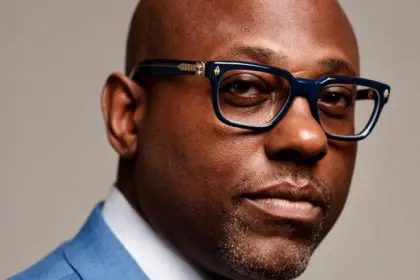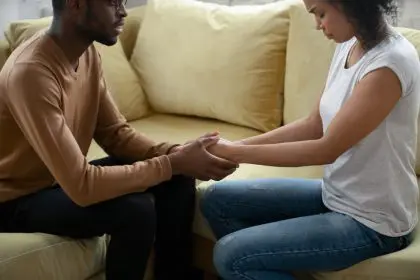Love doesn’t always follow the neat storylines we see in movies. Sometimes the most profound connections occur with people we simply cannot be with, whether due to timing, circumstances, geography, or incompatible life paths. The pain of loving someone you must release creates one of life’s most complex emotional challenges, requiring both courage and compassion toward yourself.
Saying goodbye to someone you love but cannot have demands a different kind of strength than ending a relationship that has run its course. This goodbye carries the weight of “what if” and the knowledge that under different circumstances, this love might have flourished. The process requires acknowledging both the depth of your feelings and the reality of your situation.
The journey of letting go begins with accepting that love and compatibility don’t always align. You can deeply care for someone while recognizing that being together would cause more pain than joy. This acceptance doesn’t diminish the value of your connection or the authenticity of your feelings.
1. Write a letter you’ll never send
Putting your feelings into words creates a tangible way to process complex emotions while maintaining appropriate boundaries. This letter becomes a safe space to express everything you wish you could say without the complications that direct communication might bring.
The act of writing allows you to organize scattered thoughts and emotions into coherent expressions. You can pour out your heart without worrying about the other person’s reaction or the potential consequences of your words. This process often reveals feelings you didn’t fully understand and helps clarify why this goodbye is necessary.
Include specific memories that meant something to you, acknowledge the impact this person had on your life, and express gratitude for the time you shared. Write about your hopes for their future happiness and your own commitment to moving forward. The letter becomes a record of your journey and a way to honor the relationship’s significance.
Some people find it helpful to write multiple drafts, allowing their emotions to evolve with each version. Others prefer to write continuously without editing, letting their raw feelings flow onto the page. The key is finding an approach that feels authentic to your experience.
2. Create a meaningful ritual of release
Rituals provide structure for processing grief and marking transitions in ways that feel intentional and significant. Creating a personal ceremony for saying goodbye helps your mind and heart recognize that this chapter is ending.
Consider creating a memory box containing items that remind you of this person and this relationship. Include photographs, letters, small gifts, or mementos that hold special meaning. The process of gathering these items and placing them in the box creates a physical act of containment and closure.
Some people find comfort in rituals involving nature, such as writing their goodbye on biodegradable paper and releasing it into moving water, or planting a tree or flowers in honor of what they’re releasing. These actions symbolize transformation and growth emerging from loss.
Lighting a candle while reflecting on your relationship and then extinguishing it to represent your goodbye can provide a simple but powerful ritual. The key is choosing actions that feel meaningful to you and align with your personal beliefs and values.
3. Focus on the gift of having loved deeply
Reframing your experience from loss to gratitude can transform how you process this goodbye. Instead of focusing solely on what you’re losing, consider what you’ve gained from having loved someone so deeply, even if briefly.
This love has shown you your capacity for profound connection and emotional depth. It has revealed qualities in yourself that you might not have discovered otherwise. The intensity of your feelings demonstrates your ability to care deeply, which is a gift that will serve you in future relationships.
The pain you’re experiencing is proportional to the love you felt. This relationship has expanded your understanding of what love can be and has set new standards for the kind of connection you want to seek in the future. These insights become valuable guidance for future relationships.
Consider how this person influenced your growth, challenged your perspectives, or inspired you to become a better version of yourself. These changes remain with you regardless of whether the relationship continues, making them lasting gifts from your connection.
4. Establish clear boundaries and stick to them
Saying goodbye requires creating physical and emotional distance that allows healing to occur. This often means making difficult decisions about contact and communication that honor both your need to heal and their need to move forward.
Decide whether continued friendship is possible or if complete separation is necessary for your emotional well-being. There’s no universal right answer, but honesty about your ability to maintain appropriate boundaries is crucial. Sometimes the kindest thing for both parties is to step away completely.
This might mean unfollowing them on social media, avoiding places where you might encounter them, or asking mutual friends not to share updates about their life. While these actions might feel harsh, they’re often necessary for creating the space needed for healing.
If you must maintain some level of contact due to shared responsibilities or social circles, establish clear guidelines about the nature and frequency of your interactions. Keep conversations focused on necessary topics and avoid intimate or personal discussions that might reignite romantic feelings.
5. Honor your grief process
Letting go of someone you love is a form of grief that deserves recognition and respect. Allow yourself to feel the full range of emotions without judgment or pressure to “get over it” quickly.
The grief process isn’t linear, and you may find yourself cycling through denial, anger, bargaining, depression, and acceptance multiple times. Some days will feel harder than others, and that’s completely normal. Grief has its own timeline that can’t be rushed or controlled.
Create space for your emotions by setting aside time to feel them fully. This might mean scheduling periods for crying, journaling, or simply sitting with your feelings without trying to fix or change them. Acknowledging your pain validates the significance of what you’re losing.
Consider seeking support from trusted friends, family members, or a counselor who can provide perspective and encouragement during this difficult time. Sometimes talking through your feelings with someone who cares about you can provide clarity and comfort.
6. Redirect your emotional energy
The intense emotional energy you’ve been investing in this relationship needs a new direction. Channeling this energy into personal growth, creative pursuits, or meaningful activities can help transform pain into purpose.
Consider taking on new challenges that require focus and dedication. This might mean learning a new skill, pursuing a fitness goal, volunteering for a cause you care about, or throwing yourself into work or creative projects. The goal is to engage your mind and heart in ways that promote growth and healing.
Physical activity can be particularly helpful for processing intense emotions. Exercise releases endorphins that naturally improve mood while providing a healthy outlet for emotional energy. Whether it’s running, dancing, hiking, or yoga, movement can help you work through difficult feelings.
Creative expression offers another powerful outlet for complex emotions. Writing, painting, music, or other artistic pursuits allow you to transform your experience into something beautiful or meaningful. The act of creation can provide a sense of purpose and accomplishment during a difficult time.
7. Practice self-compassion
Saying goodbye to someone you love requires enormous strength, and you deserve credit for making such a difficult decision. Treat yourself with the same kindness and understanding you would offer a dear friend in a similar situation.
Avoid harsh self-criticism about your feelings or your situation. Love isn’t always logical or convenient, and finding yourself in this position doesn’t represent a failure on your part. Sometimes the most mature and loving thing you can do is to let someone go.
Be patient with your healing process and avoid comparing your recovery to others’ experiences. Everyone processes loss differently, and there’s no standard timeline for getting over someone you love. Honor your own pace and trust that you’re doing the best you can.
Practice self-care activities that nurture your well-being during this difficult time. This might include getting enough sleep, eating nutritious foods, spending time in nature, or engaging in activities that bring you joy. Taking care of yourself isn’t selfish—it’s necessary for healing.
8. Find meaning in the experience
While painful, this experience offers opportunities for profound personal growth and deeper self-understanding. Looking for meaning in your situation can help transform suffering into wisdom that serves you in the future.
Consider what this relationship has taught you about yourself, your values, and your capacity for love. These insights become valuable knowledge that can guide your future decisions and relationships. The pain you’re experiencing now is shaping you into someone with greater depth and empathy.
This experience may also increase your compassion for others who are struggling with similar situations. Your understanding of this particular kind of heartbreak can help you support friends or family members who face similar challenges in the future.
Think about how this situation has clarified your priorities and what you want in a partner and relationship. Sometimes knowing what you can’t have helps you recognize what you truly need and want in love.
9. Open yourself to new possibilities
Saying goodbye to one love creates space for new connections and experiences to enter your life. While it may feel impossible to imagine loving someone else right now, healing opens you to possibilities you can’t yet envision.
This doesn’t mean rushing into a new relationship or trying to replace what you’ve lost. Instead, it means gradually reopening your heart to connection and allowing yourself to be curious about what the future might hold.
Consider this goodbye as clearing space for a love that can flourish fully rather than one that must exist in shadows or uncertainty. The right person for you will be someone with whom you can build a complete and healthy relationship without the barriers that made this goodbye necessary.
Trust that your capacity for deep love, demonstrated by your current pain, will serve you well in future relationships. The intensity of your feelings proves that you’re capable of profound connection, and that gift will remain with you as you move forward.
Moving forward with grace
Saying goodbye to someone you love but cannot be with requires accepting one of life’s most difficult truths: that love alone isn’t always enough. The strength required for this goodbye demonstrates your maturity and your commitment to both your own well-being and theirs.
The process of letting go is rarely linear or quick. Some days will feel like progress, while others may feel like setbacks. This is normal and expected. Healing happens in waves, and each wave brings you closer to a place of peace and acceptance.
Remember that choosing to say goodbye doesn’t diminish the value of your love or the significance of your connection. Instead, it honors the depth of your feelings by refusing to let them exist in a situation that cannot nurture them properly.
Your willingness to love deeply, even when it’s painful, reflects the best of human nature. This capacity for profound connection will serve you well in the future, when you find someone who can receive and return your love fully. Until then, treating yourself with compassion and patience will help you navigate this difficult but necessary goodbye.

















